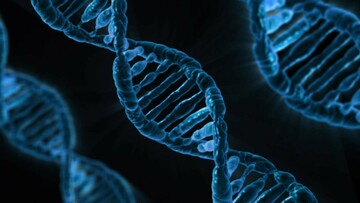What is DNA?

DNA is a molecule that contains the instructions for building and maintaining a living organism.

DNA is a molecule that contains the instructions for building and maintaining a living organism.
DNA stands for deoxyribonucleic acid. It is a long, spiral-shaped molecule that contains all the instructions for building and running a living organism. DNA is found in every cell in your body, from your skin cells to your brain cells.
Think of DNA as a set of blueprints for building a house. The blueprints tell you what materials to use, how to put them together, and how to make sure the house is safe and sound. DNA works in a similar way, telling your cells how to build and maintain your body.
DNA is made up of four different chemicals called bases: adenine (A), thymine (T), guanine (G), and cytosine (C). The bases are arranged in a specific order along the DNA molecule, and this order determines the instructions for building the organism.
For example, the order of bases in DNA determines the color of your eyes, the shape of your nose, and even your personality. If you change the order of bases in DNA, you can change the instructions for building the organism, and this can lead to different physical characteristics or even different diseases.
DNA is a very important molecule, and it is essential for life. Without DNA, we would not be able to grow, develop, or reproduce. DNA is also what makes us unique individuals, and it is what allows us to pass on our traits to our children.
Here are some concrete examples of how DNA works:
- The DNA in your eye cells tells your cells how to make the proteins that make up your eye color.
- The DNA in your skin cells tells your cells how to make the proteins that protect your skin from the sun.
- The DNA in your brain cells tells your cells how to make the proteins that allow you to think, learn, and remember.
DNA is a very complex molecule, but it is also very important. It is what makes us who we are, and it is what allows us to live and grow.
What is RNA?
RNA stands for ribonucleic acid. It is another type of molecule that is involved in building and running a living organism, just like DNA.
RNA is like a messenger that carries the instructions from DNA to the rest of the cell and helps make proteins, which are like the building blocks of our bodies. While DNA is like the blueprint for building a house, RNA is like the construction worker who reads and follows the blueprint to put everything together.
Here's an example to help you understand: Imagine you have a recipe for making chocolate chip cookies. The recipe is like the DNA because it contains all the instructions for making the cookies. But before you can actually make the cookies, you need a messenger, like RNA, to take the recipe from the cookbook to the kitchen. The RNA reads the recipe and helps make the cookies by telling your cells which ingredients to use and how to mix them together.
RNA works closely with DNA, but it has a slightly different job. While DNA stays inside the cell's nucleus, RNA can move around in the cell to different parts where it is needed. It travels from the nucleus to the area where proteins are made, called the ribosome, to help build those proteins. Without RNA, our cells would not be able to make the proteins they need to function properly.
So, in summary, RNA is a molecule that helps carry the instructions from DNA to help make proteins in our cells. It is like a messenger that moves around in the cell to make sure everything is working properly. Without RNA, our cells wouldn't be able to follow the instructions and our bodies wouldn't work correctly.

DNA is a molecule that contains the instructions for building and maintaining a living organism.